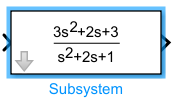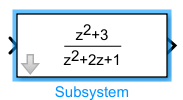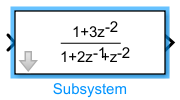dpoly
Display transfer function on block mask icon
Description
dpoly( displays
the transfer function on the block mask icon, where num,den)num represents the
coefficients of the numerator and den represents the coefficients of
the denominator.
dpoly(
displays the transfer function with the specified variable character. When Simulink® draws the block icon, the initialization commands run and the resulting
equation appears on the block icon.num,den,character)
Examples
Input Arguments
Version History
Introduced in R2007a
See Also
disp | port_label | text | droots


